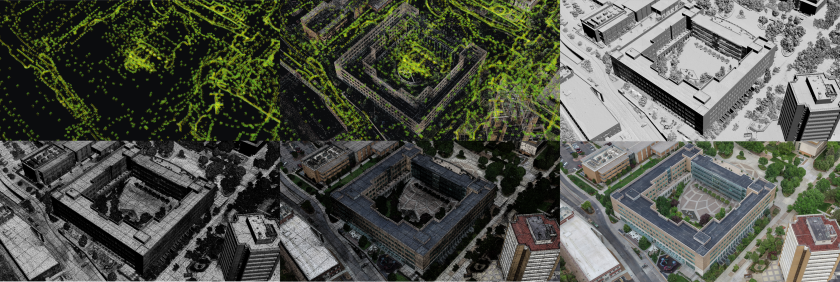
Main Article:
https://news.byu.edu/byu-engineers-create-3d-campus-model-by-stitching-thousands-of-drone-captured-images-together
Video:
https://www.youtube.com/watch?v=8TVETvBISEU
BYU’s main campus is 560 acres in size and includes roughly 100 large academic buildings. There are some 6,000 trees (900 species), miles of sidewalks and, according to most students, far too many stairs.
Grad student Bryce Berrett and his faculty mentors have virtually mapped every last inch of it. Using more than 80,000 drone-captured and ground images, and applying GPS systems for accuracy, the civil engineering student has stitched together a comprehensive 3D model of the entire BYU campus.

“Our research group has been creating 3D models from aerial photos for a while now, but to do so we need to fly drones and we can’t do that safely with people underfoot,” Berrett said. “When the COVID pandemic hit and most classes went remote in 2020, we realized we had a unique opportunity to photograph campus.”
So Berrett pivoted from his original master’s research project (which was heavily disrupted by the campus closure) and went all in on the 3D model as his new research project. With civil engineering professor Kevin Franke as his mentor, Berrett and classmates spent the summer of 2020 flying hundreds of drone flights, taking tens of thousands of images — both from the drones and DSLR cameras — and then processed those images with a technology called Structure From Motion computer vision.
The result is a high-resolution virtual version of campus so detailed that when you zoom in, you get a photo-realistic image of campus features. The immersive virtual campus view can give a prospective student — or a former student — an intimate view of what campus looks and feels like without being there, and it’s exponentially more detailed and accurate than the experience provided by satellite imagery or Google Street View.
The 3D campus model has an average resolution of about 0.7 centimeters per pixel, but increases to 0.5 centimeters per pixel for buildings and goes up to 2 millimeters per pixel for some spots like statues. That means you can actually read the words on the plaques and see fine details on the virtual statue of Brigham Young in front of the ASB, or the Cougar in front of the Student Athletic Building. And the model is accurate enough that Berrett’s team can 3D-print miniature versions of any building or statue on campus from the model data.






